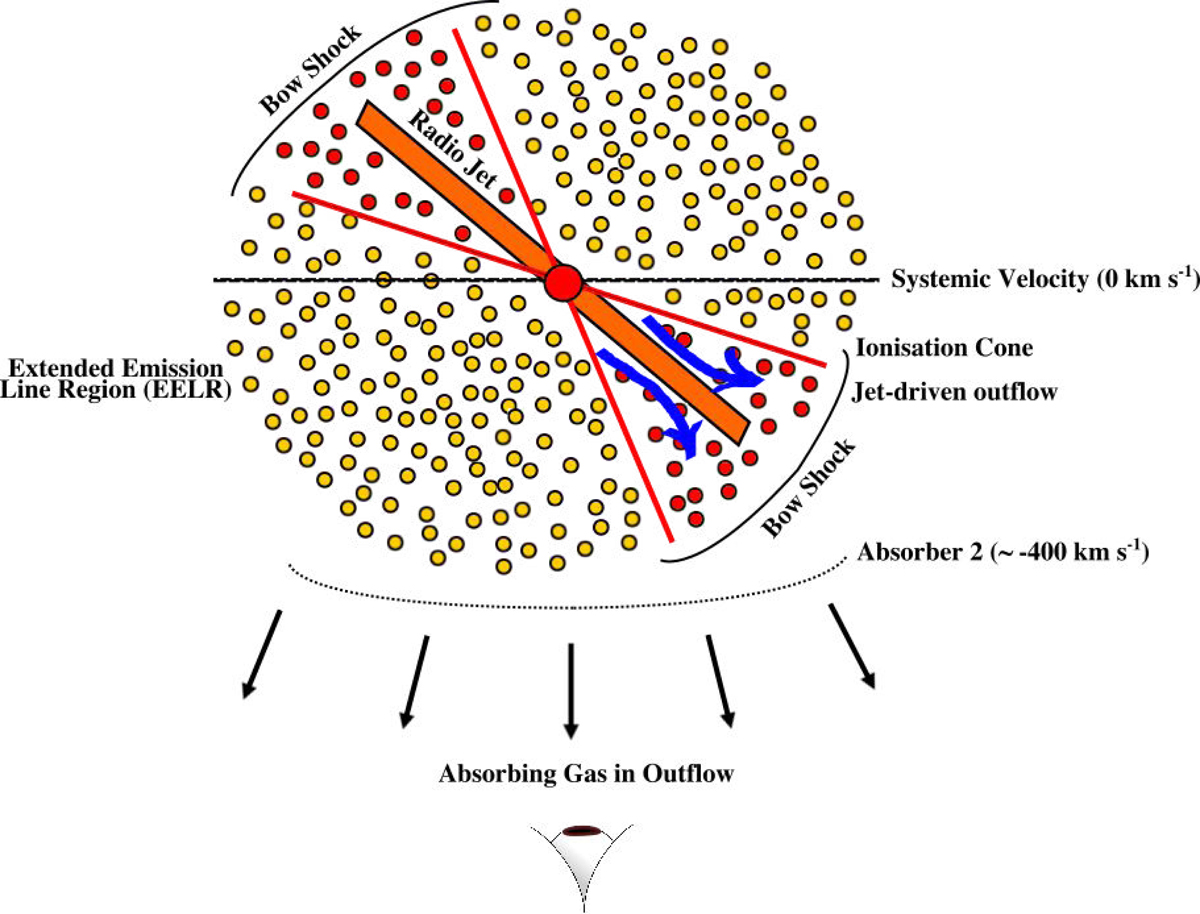Fig. 20.

Cross-section schematic of the circumgalactic medium of Yggdrasil based on evidence from the MUSE data and previous measures. The gas has no defined spatial boundaries because its estimates size of d ≳ 60 kpc is merely a minimum. The strong absorber screens emission that originates from the T ≃ 104 − 106 K EELR gas (in yellow), comprising an extended region of ionised gas as well as gas that is directly ionised by the AGN ionisation cone (in red). The absorbing gas (shown as dotted curve) is also metal enriched, as shown by C IV, N V, and Si IV that are detected at the same velocities as the Lyα absorption. The blueshifted component detected in Lyα and He II is a jet-induced outflow (blue arrows). This outflowing, ionised, and turbulent gas is spatially offset from the HSBR of the halo, which implies that the radio jet is tilted relative to the projected plane. The locations of absorber 2 is a line-of-sight projected distance, which is dependent on the ionisation parameter, U(r).
Current usage metrics show cumulative count of Article Views (full-text article views including HTML views, PDF and ePub downloads, according to the available data) and Abstracts Views on Vision4Press platform.
Data correspond to usage on the plateform after 2015. The current usage metrics is available 48-96 hours after online publication and is updated daily on week days.
Initial download of the metrics may take a while.


